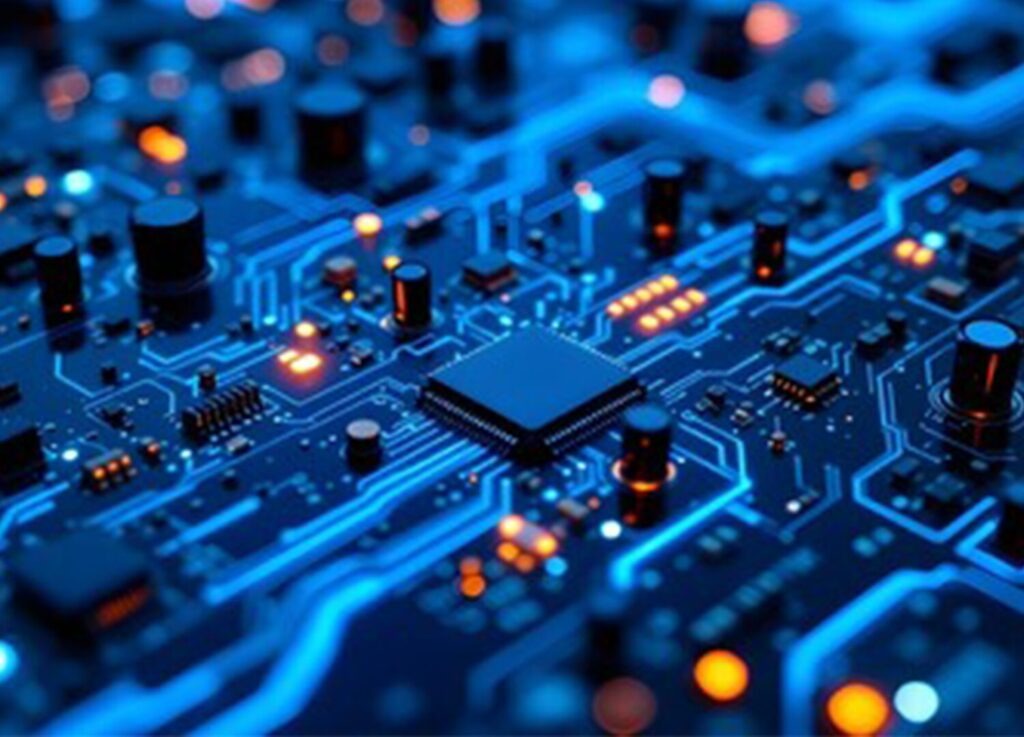Have Any Questions?
+800-327-9912
Tesla’s Influence on Modern Electronics:
A Legacy of Innovation
Tesla’s Influence on Modern Electronics: A Legacy of Innovation
Nikola Tesla was a visionary scientist and inventor whose pioneering work in electrical
engineering, wireless transmission, and automation continues to shape the modern world of electronics.
Introduction
His groundbreaking discoveries in alternating current (AC), electromagnetic fields, and high-frequency electricity form the foundation for many of today’s technological advancements.
Tesla’s influence extends across power systems, wireless communication, computing, and automation, serving as the blueprint for many of the electronic conveniences we rely on daily.
1. Alternating Current and Power Distribution
Tesla’s most significant contribution to modern electronics is the alternating current (AC) power system. Unlike direct current (DC), which was promoted by Thomas Edison, Tesla’s AC system allowed efficient, long-distance power transmission, making global electrification possible.
Tesla’s polyphase AC motor and generator played a fundamental role in the widespread adoption of AC power. Today, AC electricity powers homes, businesses, and industries worldwide, ensuring reliable and efficient energy distribution.
2. Wireless Communication and Radio Technology
Tesla’s experiments in wireless energy transmission laid the groundwork for modern communication networks, influencing technologies such as:
- Radio broadcasting
- Wi-Fi and Bluetooth
- Cellular networks and satellite communication
Although Guglielmo Marconi is often credited with inventing radio, Tesla’s patents on radio wave transmission predated Marconi’s work. In 1943, the U.S. Supreme Court officially recognized Tesla’s priority in the development of radio technology, confirming his lasting impact on modern telecommunications.
3. Tesla’s Role in Semiconductor Development
While Tesla did not invent semiconductors, his research in electromagnetic fields, resonance, and electrical conductivity influenced the evolution of transistors and microchips, which are the building blocks of modern computing and consumer electronics.
His theories on alternating current and circuit efficiency helped establish the fundamental principles of circuit design, which continue to shape the development of transistors, integrated circuits, and quantum computing.

4. Wireless Power Transfer and Inductive Charging
Tesla’s dream of wireless electricity transmission has been partially realized through modern advancements in inductive charging technology, including:
- Wireless phone chargers (Qi technology)
- Electric vehicle (EV) wireless charging
- Medical implants powered by wireless energy transfer
Although his Wardenclyffe Tower project was never completed, Tesla’s vision of a world without power cables has inspired researchers and tech companies to improve wireless energy solutions.
5. Robotics and Automation
Tesla was one of the first inventors to explore remote-controlled machines, demonstrating the world’s first radio-controlled boat in 1898. This groundbreaking work laid the foundation for:
- Modern robotics
- AI-driven automation
- Drones and self-operating machines
His concept of autonomous machines is now a reality in fields such as industrial automation, robotic surgery, and artificial intelligence-powered robotics.

6. High-Frequency Electronics and Resonant Energy Transfer
Tesla’s work with high-frequency electricity and resonance has influenced the development of:
- Oscillators and frequency generators
- Radar technology
- Medical imaging (MRI and CT scans)
Modern radio, television, and wireless transmission systems operate on principles Tesla explored in his resonant energy experiments, demonstrating how his early work continues to shape modern electronics.
7. Smart Grids and Renewable Energy Applications
Tesla’s vision of a global, wireless power grid aligns with today’s advancements in smart grid technology and renewable energy systems. His work in hydroelectric power generation at Niagara Falls demonstrated his belief in sustainable energy sources.
Today, AI-enhanced smart grids optimize electricity consumption, integrate solar and wind power, and improve energy efficiency—an extension of Tesla’s early efforts in renewable energy research.

8. Tesla’s Contributions to Computing and Data Processing
Tesla’s theories on electromagnetic wave propagation and circuit efficiency influenced early developments in computing hardware and data networks. His research laid the foundation for:
- High-speed data transmission
- Quantum computing and advanced processors
- Neural networks and artificial intelligence
His work with electromagnetic fields and resonance remains relevant in modern computing, cloud networking, and cybersecurity.
Conclusion
Nikola Tesla’s contributions to electrical engineering, physics, and wireless communication continue to shape modern electronics and technological innovation. His ideas—ranging from AC power and wireless energy to robotics and computing—serve as the foundation for today’s scientific advancements.
As electronics and AI-driven technologies continue to evolve, Tesla’s legacy remains a guiding force in innovation, proving that his vision for an interconnected, electrified world was not just a dream, but a reality in the making.
